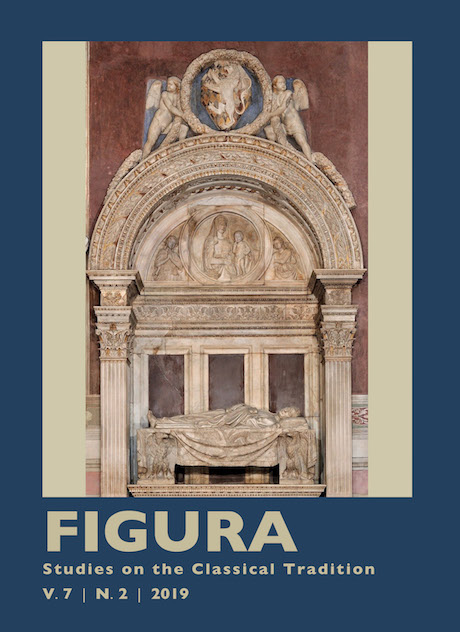Figura – Studies on the Classical Tradition
ISSN: 2317-4625
Figura – Studies on the Classical Tradition is an international journal to be published online with unrestricted access, in order to disseminate current research and writing on the Classical Tradition’s repertoire. The journal encompasses studies of Antiquity’s visual and textual culture, as well as appropriations and transfigurations of this legacy in the ancient and post-ancient world. Post-antiquity may be taken to include the contemporary period, therefore the cut-off used as a frame of reference for content proposed by Figura is conceptual rather than temporal, which calls for a distinction in this respect.
Classical Tradition
It is useful to look at the multidimensionality of the notion of “classical” by taking an approach previously seen as negative. Classical here does not refer to a style encoded in the various historical classicisms whose shared features, so to speak, were preference for a high repertoire, a sense of centrality, unity, structural transparency, an ideal of simplicity, a liking for disciplined play between rule and variety. Secondly, classical here bears no relation to a psychology of perception that would see in it a constant of the spirit. Thirdly, classical here would not be associated with any judgmental residue, in the ambit of a Classical / Anticlassical antithesis, in which the second term would be reserved for urges or drives of a creative, innovative, experimental, or subjective nature.
Once freed from these three senses of “classical” involved in overly specific perspectives, the notion of Classical Tradition may be defined more objectively. It refers to the historical process through which the cultures arisen from the Mediterranean Antiquity structured their mental coordinates, topics and argumentative procedures to constitute a repertoire of forms (visual, literary, rhetorical, mythological, philosophical, religious, scientific, musical, etc.) in an unceasing movement of crystallization, transmission and transformation of the meanings of the ancient models.

Front cover: Bernardo Rossellino. Tomb of Leonardo Bruni. Marble, 1445-1447. Santa Croce, Florence (Archivio
dell’Opera di Santa Croce, photograph by Paolo Tosi and Giorgio Misirlis).Published: 2019-10-08
Vol. 7 No. 1 (2019)Front cover: Piero di Cosimo. The discovery of honey (detail). Oil and tempera on panel, c. 1500-1505. Worcester Art Museum, Worcester, MA.
Vol. 6 No. 2 (2018)Front cover: Autor desconhecido, Macrocosmo/Microcosmo e os ventos, século XIII, Liber Divinorum Operum,
Hildegard von Bingen, terceira visão, Ms. 1942, fol. 28v, Biblioteca Statale, Lucca.
Vol. 6 No. 1 (2018)Front cover: Andrés Sánchez Gallque - Los tres mulatos de esmeraldas (detail), 1599. Oil on canvas. Museo de América, Madrid. © Museo Nacional del Prado.
Vol. 5 No. 2 (2017)Front cover: Francisco de Holanda, Finis Deo, in: De aetatibus mundi imagines, 1545 (manuscript preserved in the Biblioteca Nacional de España, Madrid).
Vol. 5 No. 1 (2017)Front cover: R. B. Kitaj, Aby Warburg as maenad, 1961-1962, Stiftung Museum Kunstpalast, Düsseldorf.
Kallimachos (adaptation of work attributed to), Marble relief with a dancing maenad, c. 27 B.C.-A.D. 14,
MetMuseum, New York.
Vol. 4 (2016)Front cover: Tiziano, Isabella of Portugal, 1548, Museo del Prado, Madrid.
Vol. 3 (2015)Front Cover: Giovanni Francesco Romanelli, Putti che pescano, 1637, Fundação Eva Klabin, Rio de Janeiro.










 Stumble It!
Stumble It!

No comments:
Post a Comment